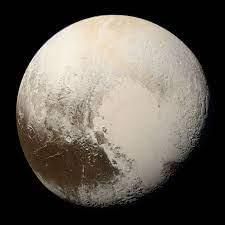Test: The Solar System- 1 - Class 4 MCQ
10 Questions MCQ Test Science for Class 4 - Test: The Solar System- 1
Which of the following statements is correct.
Statement A: Asteroids can be very large or as small as a grain of sand.
Statement B: Pluto is the ninth planet in the solar system.
Statement A: Asteroids can be very large or as small as a grain of sand.
Statement B: Pluto is the ninth planet in the solar system.
Which of the following planets are very cold and are called ice giants?
State whether the following statement is True or False:
Earth is one of the planets with life because it has the right temperature, water, air with oxygen, and a Moon.
Solve the riddle.
No matter how hard you look, you'll never find me.
Unless you have a telescope to help you see.
I was once called a planet, but not anymore.
Now I'm just a "Dwarf Planet," but too important to ignore.Which planet am I?
Which of the following is true?
Statement A: Sun is the hottest planet in the solar system.
Statement B: Sun is revolving around the Earth in an elliptical orbit.
|
49 videos|219 docs|34 tests
|




















